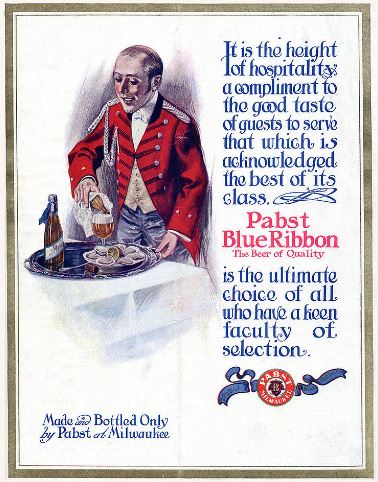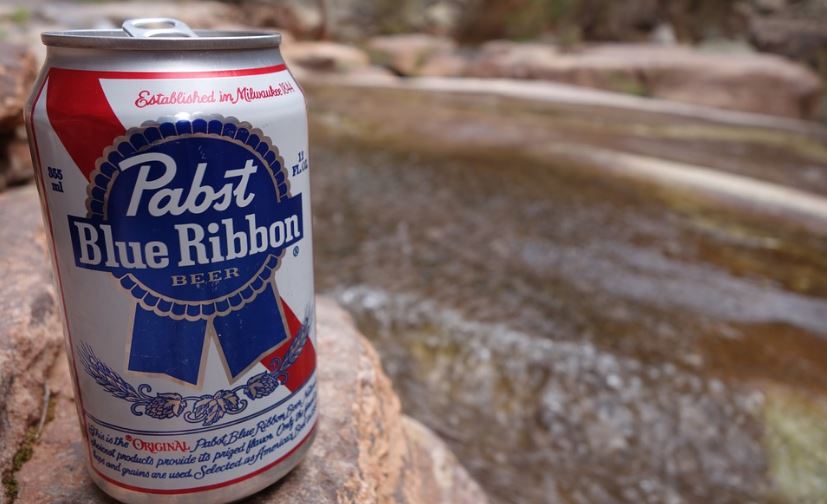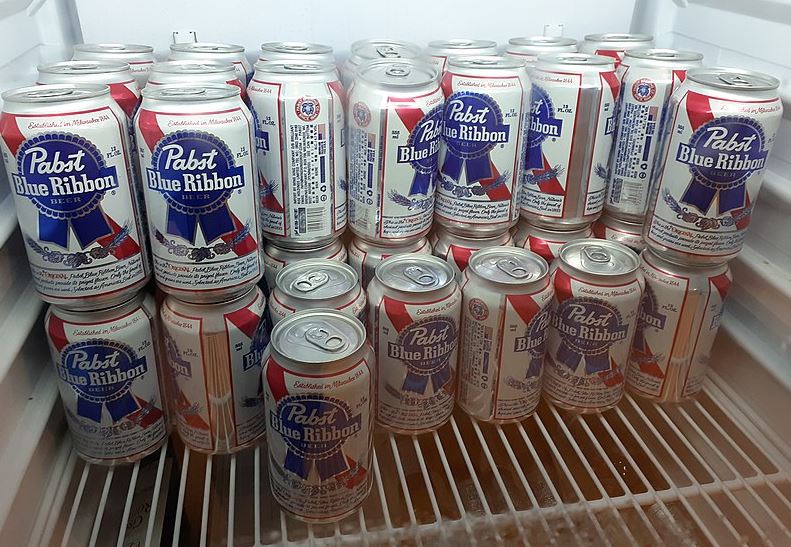The Pabst Brewing Company is an American company that is rather unique in a couple of ways.
First, Pabst doesn’t act like a traditional brewer, despite the name. In fact, it does not brew beer at all. It is a holding company that claims more than 24 beer and malt liquor brands to its name, including its own flagship brew Pabst Blue Ribbon.
Second, Pabst staged an unlikely comeback. The company’s 177 years in the business has been marked by initial success, then decline, and then its recent revival as a “hipster” beer brand. Pabst’s resurrection from its two-decade slump is pretty unconventional, which makes it even the more remarkable. Pabst skyrocketed from selling less than a million barrels in 2001 to over 92 million gallons in 2012. Much has been written about the brand’s recent success and many people have worked hard to continue the word-of-mouth marketing approach since, foregoing the conventional beer marketing methods.
History
The original brewery was founded in 1844 in Milwaukee, Wisconsin, initially as Empire Brewery, and later Best Brewing Company, by German-American brewer Jacob Best.
One of Jacob’s sons, Philip, took control of the brewery in 1860. Philip’s son-in-law, Frederick Pabst (also of German ancestry), bought 50% of the company and assumed the role of vice president. Philip sold the remaining half of the company to his other son-in-law, Emil Schandein.
Schandein died in 1889, leaving his widow Lisette (Philip’s daughter) as the company’s vice president and Frederick Pabst as president. A year later, Pabst changed the company’s name from “Best” to “Pabst,” thus the Pabst Brewing Company officially began.
From its original location in Milwaukee, Wisconsin, Pabst relocated its headquarters in Los Angeles, California, and then to its current location in San Antonio, Texas.

Why “Pabst Blue Ribbon”?
When Pabst Beer Company was then Best Beer Company, it won many awards. Its flagship brew, Best Select, had picked up many awards at various fairs and beer competitions from the 1870s through the 1880s. So many, in fact, that Frederick Pabst had already begun tying blue silk ribbons to dress up each Best Select bottle.
In 1892, Pabst purchased nearly one million feet of blue silk ribbons to be tied by hand around every Best Select bottle. In 1895, the “Blue Ribbon” was added to the beer’s name and in 1899, the brand name was changed to Pabst Blue Ribbon as we know it today.
Peak, decline, and revival of Pabst Blue Ribbon
Pabst used to be one of the best-selling beer brands in the country. Its sales reached their peak at 18 million barrels in 1977.
The original Pabst brewery in Milwaukee ended its operations in 1996, ending its then-152-year history. By 2001, sales had dipped below a million barrels, a far cry from its 1977 sales.
In 2010, food executive Charles Dean Metropolous purchased the flagging brewery for a reported $250 million. In 2014, Pabst was acquired by Blue Ribbon Intermediate Holdings LLC, a partnership between Eugene Kashper, an American beer entrepreneur and Pabst’s current chairman, and TSG Consumer Partners, reportedly for $700 million.
Since then, Pabst’s sales have grown in leaps and bounds. Its sales have come back to their robust levels. In 2012, Americans gulped down nearly three million barrels (or around 92 million gallons or 350 million liters) of Pabst beer – nearly 200% more than they did in 2003.
Pabst’s rapid growth came amid the steady downward trend of beer consumption in the US, which saw consumers switching out beer for wine and other spirits. This steady downfall was particularly acute among young adult consumers and especially harsh to low-end brewers, such as Budweiser and Miller, which both produce light lagers similar to Pabst. On the other hand, the beer market has shifted towards craft beers, which Pabst has decidedly not.
Despite the unfavorable circumstances and market changes, Pabst continues to enjoy some of its strongest performance in its history.
Pabst Blue Ribbon’s “non-marketing” marketing approach
Big beer brands would pay millions of dollars for placements for TV ads, billboards, online ads, etc. On the other hand, Pabst’s successful comeback and remarkable regrowth are not really attributed to conventional marketing methods that big beer companies usually spend on. In fact, its branding has been largely accidental. Pabst Blue Ribbon, as a product, is not at all different or distinctive from the other beer brands – cheap, low in alcohol, and even watery. It’s the everyman’s beer – the type of beer that regular guys and gals would like to drink while hanging out on a fun weekend night. The Washington Post even quipped, “It’s the drink of choice for people who like any evening of carousing to involve lots of visits to the bathroom.”
The truth is that nothing else than the classic word-of-mouth marketing that has got Pabst Blue Ribbon back on track. The price of the beer is low; plus, it is hardly advertised. But is the lack of aggressive marketing support has helped Pabst Blue Ribbon gain a cult following of hipsters in recent years. According to one observer, hipsters worship the “lowbrow” culture of the 70s and 80s, and the new hipster customer base feels like they drink Pabst Blue Ribbon by their own will, and Pabst doesn’t attempt to disprove that notion to them.
In addition to word-of-mouth advertising, Pabst seeks its desired target niche through sponsorships of indie music, small local businesses, and post-collegiate sports teams. In 2021, Pabst began supporting pro wrestling by becoming a sponsor for pro wrestler Matt Cardona’s podcast. It eventually led to Pabst’s first major TV commercial in many decades by sponsoring the TV wrestling program AEW Dynamite.
Since then, the Pabst Brewing Company has stuck to its marketing strategy by not doing any marketing at all – at least initially. It has gone against the flow by choosing a more laid-back approach in advertising its flagship brew, Pabst Blue Ribbon, which has worked marvelously for the company.



